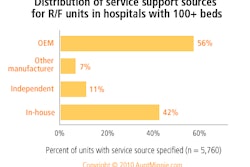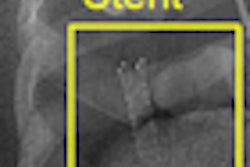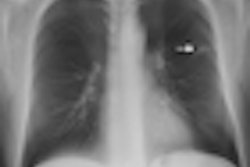One of the major challenges in the current use of CAD is detecting nodules that overlap with ribs. In addition, ribs are a frequent cause of false-positive marks, according to Chen.
In the hope of rectifying this problem, the researchers aimed to develop a CAD scheme that incorporates virtual dual-energy (VDE) technology, which offer suppression of the ribs on chest x-rays via a massive-training artificial neural network (MTANN).
In testing on a database of 126 nodules on 126 chest x-rays, the use of VDE images increased the CAD software's sensitivity from 63.5% to 73%, with the same false-positive rate.
"[CAD] with a high sensitivity for subtle nodules and a low [false-positive] rate would be useful for radiologists in detecting such lung nodules in [chest x-rays]," Chen told AuntMinnie.com. "By using VDE images, the sensitivity and specificity of our [CAD] scheme for nodule detection in [chest x-rays] were improved substantially."



















